
HOME
INTRO
SYMBOLS
ALMANAC
ECONOMY
GEOGRAPHY
STATE MAPS
PEOPLE
FORUM
NEWS
COOL SCHOOLS
STATE QUIZ
STATE LINKS
BOOK STORE
MARKETPLACE
GUESTBOOK
CONTACT US


You may double left-click on a word on this page to retrieve its definition. Tweet Follow
Connecticut State Folk Dance

Connecticut State Folk Dance: Square Dance
Posters and Photographs
Adoption of the square dance as the official state folk dance of Connecticut was drafted by the Connecticut House Joint Committee on Commerce in February 1995. It's not clear to us, as yet, who and what prompted the legislation but it's is clear that increasing state revenue was a priority of the Commerce Committee.
Here are a few things we do know:
- The Connecticut Association of Square Dance Clubs (CASDC) was involved with the legislation.
- In the November, 1991 issue of American Squaredance magazine, Larry and Pat Loeffler were listed as Connecticut legislative chairmen for the American Folk Dance for the States campaign.
- In the November, 1995 issue of Northeast Square Dancer magazine it's mentioned that the work on the Connecticut folk dance campaign had been in progress for five years.
- Several members of CASDC attended the Governor Rowland bill signing but no mention is made of Larry or Pat Loeffler. It is not clear what role they actually played in the campaign.
According to bill documentation, House Bill No. 5154, co-sponsored by Michael Jarjura, Joan Hartley, Claire Sauer and Stephen Somma was drafted by the House Commerce Committee and introduced for the sole purpose of generating tourist revenue rather than being related to a particular folk art of Connecticut.
The simple text of the proposal and purpose can be read below.
STATE OF CONNECTICUT
Committee Bill No. 5154
Page 1
Referred to Committee on COMMERCE
LCO No. 3006
Introduced by (CE)
General Assembly
January Session, A.D., 1995AN ACT MAKING SQUARE DANCING THE OFFICIAL FOLK DANCE.
Be it enacted by the Senate and House of Representatives in General Assembly convened:
(NEW) The square dance shall be the state folk dance.
STATEMENT OF PURPOSE: To increase state revenue from tourism. This designation would be particularly significant for tourism promotion in 1995, as Waterbury will host the Northeast Regional Square Dance Convention for the second year in a row.
[Proposed deletions are enclosed in brackets. Proposed additions are all capitalized or underlined where appropriate, except that when the entire text of a bill or resolution or a section thereof is new, it is not capitalized or underlined.]
Co-Sponsors: REP. JARJURA, 74th DIST.; REP. HARTLEY, 73rd DIST.
REP. SAUER, 36th DIST.; SEN. SOMMA, 16th DIST.

Saturday Night Square Dancing (1942)
House Bill No. 5154 (HB5154) was drafted by the House Commerce Committee on February 8, 1995. Shortly thereafter, on February 14, a public hearing was held. After more than two months of administrative juggling in and out of various committees, HB5154 made it to the floor of the Connecticut House of Representatives.
Representative Jarjura (74th District) testified that this bill would be an economic boost to the city of Waterbury and the surrounding municipalities that would sell their goods and services to the people who would attend these square dancing conventions.
On April 26, 1995, the folk dance bill was approved by the House and forwarded to the Senate.
The Senate managed to dispense with HB5154 more rapidly than the House. The Senate approved HB5154 in about three weeks; on May 18, 1995.
Governor John G. Rowland signed House Bill No. 5154 June 6, 1995 designating the square dance the official folk dance of Connecticut.
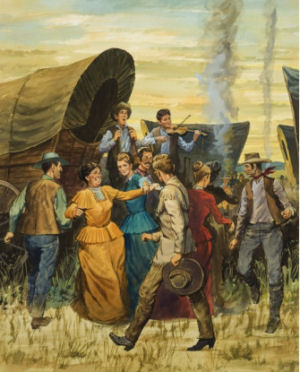
Connecticut State Folk Dance: Square Dance
Posters and Photographs
How did everybody make out after passing this legislation?
- The 37th New England Square and Round Dance Convention was held in Waterbury on April 28th and 29th. House Bill No. 5154 had been approved in the Connecticut House but had gone no further at this time.
- The 28th Connecticut Square and Round Dance Festival was held on Sunday, March 17, 1996, in Middletown, Connecticut, less than an hour's drive west of Waterbury.
- Michael J. Jarjura left the Connecticut House of Representatives and was elected as Mayor of the City of Waterbury in November 2001. He was reelected to a second term in 2003 and reelected again in 2005, 2007, and 2009.
- Governor John G. Rowland resigned from office during a corruption investigation in 2004. He later pleaded guilty ton one count of honest service, mail and tax fraud.
The square dance is a popular type of folk dance in the United States. This dance for four couples, or groups of four couples, is performed in a compact framework of a square, each couple forming a side. Traditionally accompanied by a fiddle, accordion, banjo and guitar, the couples perform a variety of movements prompted by the patter or singing calls (instruction) of a "caller". Cooperative movement is the hallmark of well-executed square dancing.
Square dancing is to be distinguished from related dances called contra or longways dance where couples stand double file in a line and from round dances where couples stand in a circle. The origin of the square dance can be traced to English derivation and to the stately French cotillion performed in square formation that was popular at the court of Louis the fifteenth later replace by the quadrille (another square dance).
Modern western square dance clubs across the country have collaborated to have the square dance declared the state folk dance in all fifty states. It is intended that the state designation be used as leverage to get the square dance named the official American folk dance on the national level. There is some controversy over their efforts which can be read about in this brief article.
Connecticut Law

Traditional Square Dance Musicians
The following information was excerpted from the Connecticut General Statutes, Title 3, Chapter 22, Section 3-110k.
TITLE 3. STATE ELECTIVE OFFICERS
CHAPTER 32. SECRETARY
SECTION 3-110k
Sec. 3-110k. State folk dance. The square dance shall be the state folk dance.
(P.A. 95-107.)
Sources...
House Commerce Committee. "H.B. No. 5154: Session Year 1995." Connecticut General Assembly. State of Connecticut, 6 June 1995. Web. 21 Nov. 2004.
"MOMENTUS MILESTONE: Connecticut." American Squaredance Nov. 1995: 75. Print.
"Sec. 3-110k. State Folk Dance." GENERAL STATUTES OF CONNECTICUT Revised to January 1, 2015. Connecticut General Assembly, 1 Jan. 2015. Web. 11 Mar. 2016.
Shearer, Benjamin F. and Barbara S. State Names, Seals, Flags and Symbols: A Historical Guide Third Edition, Revised and Expanded. Westport, Conn: Greenwood Press, 3 Sub edition, 2001.
"SQUARE DANCING: Official State Dance in Connecticut." Northeast Square Dancer Sept. 1995: 59. Print.
Additional Information
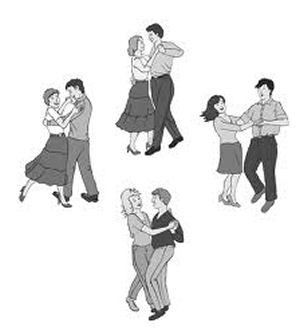
Connecticut State Folk Dance: Square Dance
Square Dancing 101: Square dancing basic including positions, formations, moves, and a glossary.
Video Square Dance Lessons Online: Video Square Dance Lessons Online and on DVD from Cyberpoint Marketing, LLC.
A Brief History of Square and Round Dancing: by Herb Egender.
Square Dancing: The Historical Geography of an American Folk Custom: by Richard M. MacKinnon, Allan Hancock College, Santa Maria, California.
Square Dance History Project: Website devoted to the documenting the history of square dancing with historical documents and an emphasis on imagery as much as possible.
History and Heritage of Modern American Square Dancing: A summary of the essays by Dorothy Shaw, Bob Osgood and Kenny Reese.
The State Folk Dance Conspiracy: Fabricating a National Folk Dance: by Judy Mangin - Originally published in the Old-Time Herald, v.4(7) p.9-12, Spring 1995.
National Folk Dance Effort Moves Forward: We're On Our Way Now, So Let's Make a Lot of Noise!: United Square Dancers of America National Folk Dance Committee.
The Square Dance Legislation Collection: American Folklife Center 1984/024, Compiled by Michelle Forner, Library of Congress, Washington DC, December 1994
Official website: Connecticut Association of Square Dance Clubs, Inc.(CASDC).
Official website: Square Dance Foundation of New England, Inc.
Official website: Square Dance New England.
State dances: Complete list of official state dances from NETSTATE.COM
More symbols & emblems: Complete list of official Connecticut state symbols from NETSTATE.COM.
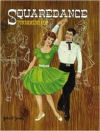
Square Dance Fundamentals
John W. Jones
Square Dance Fundamentals, John W. Jones. 208 pages. Publisher: BookSurge Publishing (February 5, 2007)
While there have been countless fun books written on square dancing, Squaredance Fundamentals was the first to cut to the chase. There is no interesting history of square dancing, there are no entertaining anecdotes, just the nuts and bolts of how to square dance. Revolutionary illustrations show the dancer’s point of view, not just the spectators’ viewpoint. Dancers can, without turning on their heads, glean from the detailed illustrations exactly what they need to be doing with their hands, feet, etc. Each dancer can effortlessly grasp the material and easily retain it. Renowned master caller/teacher, Marshall Flippo, assiduously assisted the author in establishing the very first guidelines for standardized “Basic Maneuvers” which would enable square dancers to dance gracefully with any group, anywhere.
No one shows you better how to execute the maneuvers than John W. Jones with his super simplified instructions and state-of-the-art illustrations in Squaredance Fundamentals - the gold standard for over 37 years.
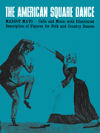
The American
Square Dance
Margot Mayo
The American Square Dance, by Margot Mayo. 116 pages. Publisher:Music Sales American (September 1, 2006)
You can have fun square dancing and you'll learn how to dance the figures and even learn how to call a square dance with Margot Mayo's classic manual, The American Square Dance. Here is the basic book for square dancers containing all of the essentials for many hours of enjoyment. An illustrated glossary of square dance terms shows all of the basic square dance figures – promenade, allemande left, do-si-do, etc. Complete instructions, calls and illustrated figures for 13 of the most popular American square dances appear, plus the music all ready for your pianist and fiddlers to play.
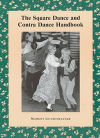
The Square Dance and
Contra Dance Handbook
Margot Gunzenhauser
The Square Dance and Contra Dance Handbook: Calls, Dance Movements, Music, Glossary, Bibliography, Discography, and Directories, by Margot Gunzenhauser. 320 pages. Publisher: McFarland & Company, Inc., Publishers; annotated edition (July 28, 2010)
This comprehensive guide to traditional style square and contra dancing, sometimes referred to as "country dancing," covers both music and style and gives background information on various dance types and calling techniques. Ninety dances, presented in chapters according to type (mixers, progressive circles, contra, Southern mountain style, squares and others), in a wide variety of formations are described with drawings and diagrams for many of the movements. A glossary of terms, a directory of addresses (organizations; vendors of books, recordings and audio equipment; and dance camps), and an annotated discography and bibliography are also provided.
A glossary of terms, a directory of addresses (organizations; vendors of books, recordings and audio equipment; and dance camps), and an annotated discography and bibliography are also provided.
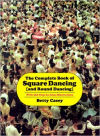
The Complete Book
of Square Dancing
(and Round Dancing)
Betty Casey
The Complete Book of Square Dancing (and Round Dancing), by Betty Casey. 208 pages. Publisher: University of North Texas Press (June 1, 2000)
This book includes: 50 basic movements, 35 advanced movements, variations, dances that are a part of the American heritage, Contra and Round Dances, polkas and reels, and calls, past and present.
“Square dancing is friendship set to music,” says author Betty Casey. Just take four couples, old or young, put ’em on a good floor, turn on the music, and you’re all set. Whether you’ve done it before or you’re just starting out, this book tells you everything you need to know—85 basic movements used all over the world, the spirited calls unique to square dancing, the costumes and equipment that are best, and music (from “Red River Valley” to “Mack the Knife”) that will set your feet in motion.
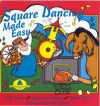
Square Dancing
Made Easy
Square Dancing Made Easy, Grade level: K-6. Audio CD (September 1, 1995), Number of Discs: 1, Label: Educational Activities, Inc.
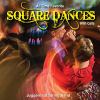
All Time Favorite
Square Dances
All Time Favorite Square Dances with Calls, Audio CD (September 8, 2009), Number of Discs: 1, Label: KADO, Run Time: 60 minutes.

Square Dance Music
& Calls
Square Dance Music & Calls, Audio CD (November 21, 2006), Number of Discs: 1, Label: Collectables Records.
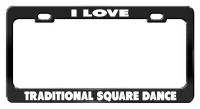
Black Metal
License Plate Frame
I LOVE TRADITIONAL SQUARE DANCE Black Metal Car Accessories License Plate Frame, This high quality license plate frame is made of metal, and it's the best quality item of its kind in the market. The lettering and art work are done by waterproof vinyl on the license plate frame and it will last for many years without any damage. It will not get brittle or cracked. It fits on all USA and Canada vehicles. It measures 12.5" X 6.5" and is durable to last under all weather conditions.
- Heavy Duty High Quality Metal License Plate Frame.
- Perfect Gift idea And Easy Installation.
- Rust, Corrode And Fade Free For Many Years.
- Fits all US and Canada License Plates.
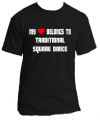
Traditional Square
Dance T-Shirt
MY HEART BELONGS TO TRADITIONAL SQUARE DANCE, This is a high quality pre-shrunk t-shirt that will not shrink or fade. It's comfortable, casual and loose fitting and will quickly become one of your favorites. It wears and looks well on anyone. It is cured with a heat treatment process to ensure lasting durability.
Brand New High quality preshrunk tee-shirt that will not shrink or fade. Double-needle stitched hemmed sleeves and bottom. Highest quality printing materials. 50% Cotton, 50% Polyester preshrunk blend. Soft, comfortable and weighs 6 oz.
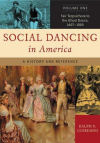
Social Dancing in America: A History and Reference (Volume One), by Ralph G. Giordano. 380 pages. Publisher: Greenwood (November 30, 2006)
Social Dancing in America examines the role of social dancing in daily life from the first settlements in 1607 through the birth of the nation in 1776 and into the beginning of the 21st century. This two-volume set provides a history of American social dances including the Virginia Reel, Square Dancing, the Lindy Hop, Rock 'n' Roll, the Twist, Disco, Breakdancing, and Hip-Hop. Social Dancing in America places social dancing in a historical, social, cultural, and political context.
Volume 1 explores the integral role that social dancing played in the lives of Americans from the first settlements in 1607 through the 19th century, often in the most unlikely of ways. For example, readers may be surprised to learn that George Washington was a well-known aficionado of social dancing, and that he incorporated the etiquette and manners of dances such as the Minuet as a means of diplomacy to secure European allies during the Revolutionary War. After his death, Americans continued to celebrate his birthday with a grand ball that included dancing.
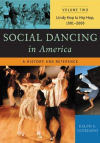
Social Dancing in America: A History and Reference (Volume Two), by Ralph G. Giordano. 428 pages. Publisher: Greenwood (November 30, 2006)
Volume 2 places social dance in a 20th-Century context, illustrating how social dancing itself paralled the social, economic, and cultural traditions of each era. For example, segregation and the Jim Crow mentality was cemented in place all over the United States, and for much of the century, dancing and dance halls were strictly segregated. Segregation forced a mass migration north, and with it came the transformation of Delta Blues music into an American original—Jazz. Jazz gave birth to the Charleston, and later evolved into Swing, which created the Lindy Hop. Later, with the advent of television, programming such as American Bandstand, Soul Train, Dance Fever, and MTV greatly influenced dance styles and modern trends such as Rock 'n' Roll, Freestyle, Disco, Breakdancing, and Hip-Hop.

